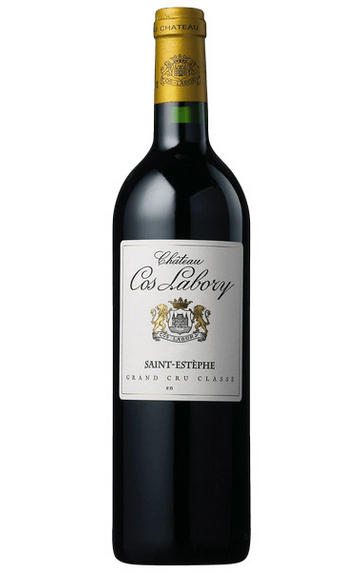
2022 Château Cos Labory, St Estèphe, Bordeaux
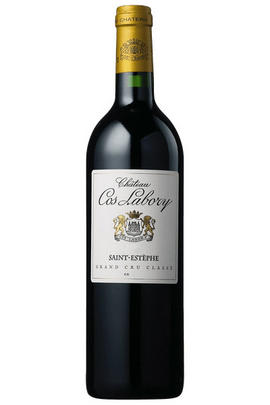
Critics reviews
The 2022 Cos Labory, now owned by Michel Reybier of Cos d'Estournel, is matured in 50% new oak. The nose showcases blackberry and blueberry fruit. This has commendable purity, even if it lacks a little nuance. The palate is medium-bodied and structured, with grainy tannins, nicely integrated oak and a fresh, chalky-textured finish. Good potential.
Drink 2028 - 2040
Neal Martin, Vinous.com (April 2023)
The 2022 Cos Labory is rich, explosive Saint Estèphe. Gravel, incense, tobacco, liquorice, black cherry, chocolate, smoke and leather all build in a potent, broad wine that makes an impression, to say the least. Bracing mineral notes extend the finish. Michel Reybier acquired the estate in 2023, and his team finished the en primeur blend.
Drink 2030 - 2047
Antonio Galloni, Vinous.com (April 2023)
Intense spice, with some evident astringence in its tannins. Opens up to focus on dark cassis, blackberry and bilberry fruits, with baked earth and cloves alongside. A fascinating estate to watch over the next few years as the team of Cos d'Estournel take control, making this a good vintage to put a marker in the sand as to the old style of Cos Labory. 50% new oak.
Drink 2028 - 2042
Jane Anson, JaneAnson.com (April 2023)
55% Cabernet Sauvignon, 36% Merlot, 7% Petit Verdot, 2% Cabernet Franc. 10% press wine was added for the first time. Cask sample.
Dark fruit with a leafy edge. Firm and dry with a bit more depth and punch this year. Still firmly tannic but manages a minerally freshness. Should age.
Drink 2030 - 2045
James Lawther MW, JancisRobinson.com (May 2023)
The 2022 Cos Labory delivers cassis, blueberries, spices and petals aromas, followed by a medium to full-bodied, taut and tangy palate. A Cabernet Sauvignon-dominant blend, this minor Saint-Estèphe was acquired earlier this year by Michel Reybier, the proprietor of Cos d'Estournel.
William Kelley, Wine Advocate (April 2023)
A juicy and fruity wine with attractive berries and light chocolate. Medium body. Firm tannins. Show finesse and complexity for the appellation.
James Suckling, JamesSuckling.com (April 2023)
Concentrated and deep on the palate, sumptuous, this has weight and energy. It’s strict in a sense, still with tension offset by hints of juicy sweetness, minerality and liquorice spice. Not massively complex but vibrant and delivered so well. Complete and easy but still with bite and tang. Château Cos d’Estournel bought the estate in late 2022.
Drink 2026 - 2037
Georgina Hindle, Decanter.com (April 2023)
Potentially the finest wine I've tasted from this 18-hectare château (which was sold to Michel Reybier in March of 2023), the 2022 Château Cos Labory has a perfumed, juicy, medium to full-bodied style carrying lots of darker, almost blue fruits as well as notes of violets, tobacco, and forest floor. It's balanced and has ripe, polished tannins and outstanding length.
Jeb Dunnuck, JebDunnuck.com (May 2023)
About this WINE
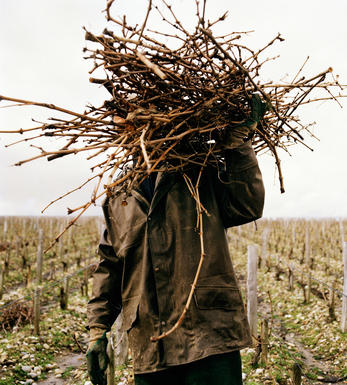
Chateau Cos Labory
Cos Labory is one of the smallest of the Cru Classé châteaux in Bordeaux. This 5ème Cru Classé St-Estèphe property has been in the hands of the Audoy family since the beginning of the last century - today it is owned by Madame Cécile Audoy and managed by her son Bernard. The main part of the 18-hectare vineyard is a long, thin strip, located just to the west of Cos d'Estournel, with the rest being near Lafon Rochet.
The average age of the vines in the vineyard is 25 years and the wine is typically a blend of one third each of Cabernet Sauvignon, Cabernet Franc and Merlot, with sometimes a small proportion of Petit Vedot. The grapes are fermented in enamel-lined concrete tanks and the wine is aged in small bariques (30-50% new) for 18 months. Cos Labory is never the most full-bodied of St-Estèphes, possibly due to the relatively high proportion of Cabernet Franc in the blend. However, the last 10 years have seen a move towards a more substantial style and the wines now are some of the best (and most sensibly priced) in St-Estèphe today.
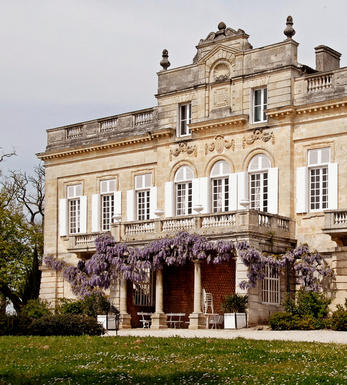
Saint-Estèphe
Saint-Estèphe is the northernmost of the most important communes of the Médoc and borders Pauillac on its southernmost border, with only a gully and stream separates it from Ch. Lafite. To the north lies the Bas-Médoc.
Saint-Estèphe is defined by the depth of its gravel, which is ubiquitous but of varying depths and occasionally very shallow, when clay predominates. This keeps the soil cooler and wetter than its counterparts so that the wines can appear fresh in lighter vintages, but superbly successful in hot, dry years.
The best châteaux in the south of the commune have the deepest soil and the thickest gravel. Cos d'Estournel has an exceptional terroir with its vineyards being located on a south-facing ridge of gravel with excellent drainage.
Saint-Estèphe is the least gravelly of main Médoc communes and in the north of the commune the vineyards are heavier and more clay-based leading to a rustic style of wine being produced.
The wines can appear austere in youth with a discernable ferric note at some châteaux, but the best typically display good depth of colour, pronounced acidity an tannins in youth and are exceptionally long-lived. At their best, they are the equal of almost any Bordeaux. The well-regarded St Estèphe co-operative controls the production of about half the appellation.
Recommended Châteaux
Cos (Ch. Cos d'Estournel), Ch. Montrose, Ch. Calon-Ségur, Ch. Lafon-Rochet, Ch. Les Ormes de Pez, Ch. Beau-Site, Ch. Cos Labory, Ch. Phélan-Ségur
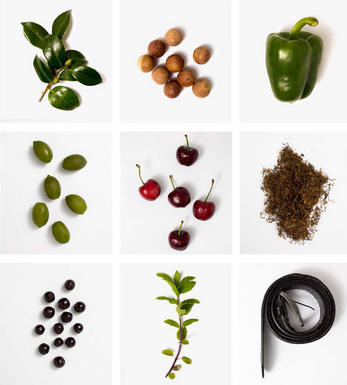
Cabernet Sauvignon Blend
Cabernet Sauvignon lends itself particularly well in blends with Merlot. This is actually the archetypal Bordeaux blend, though in different proportions in the sub-regions and sometimes topped up with Cabernet Franc, Malbec, and Petit Verdot.
In the Médoc and Graves the percentage of Cabernet Sauvignon in the blend can range from 95% (Mouton-Rothschild) to as low as 40%. It is particularly suited to the dry, warm, free- draining, gravel-rich soils and is responsible for the redolent cassis characteristics as well as the depth of colour, tannic structure and pronounced acidity of Médoc wines. However 100% Cabernet Sauvignon wines can be slightly hollow-tasting in the middle palate and Merlot with its generous, fleshy fruit flavours acts as a perfect foil by filling in this cavity.
In St-Emilion and Pomerol, the blends are Merlot dominated as Cabernet Sauvignon can struggle to ripen there - when it is included, it adds structure and body to the wine. Sassicaia is the most famous Bordeaux blend in Italy and has spawned many imitations, whereby the blend is now firmly established in the New World and particularly in California and Australia.


Buying options
Add to wishlist
Description
Blend: 55% Cabernet Sauvignon; 36% Merlot; 7% Petit Verdot; 2% Cabernet Franc.
After 163 years, Cos Labory has again been reunited with its next-door neighbour, Cos d’Estournel: Michel Reybier bought it from the Audoy family this year. The 2022 was made by the existing team; it doesn’t shy away from the style of the vintage. The wine is assertive, almost pumped up, with fulsome but not over-exaggerated tannins, along with deep plum fruit and earthy spice.
The château has been making good progress in recent vintages. It will be fascinating to watch the progress of this oft-overlooked Fifth Growth once the full weight of the Cos d’Estournel team gets behind it.
Drink 2027 - 2038
Score: 15.5/20
Berry Bros. & Rudd (June 2023)
wine at a glance
Delivery and quality guarantee